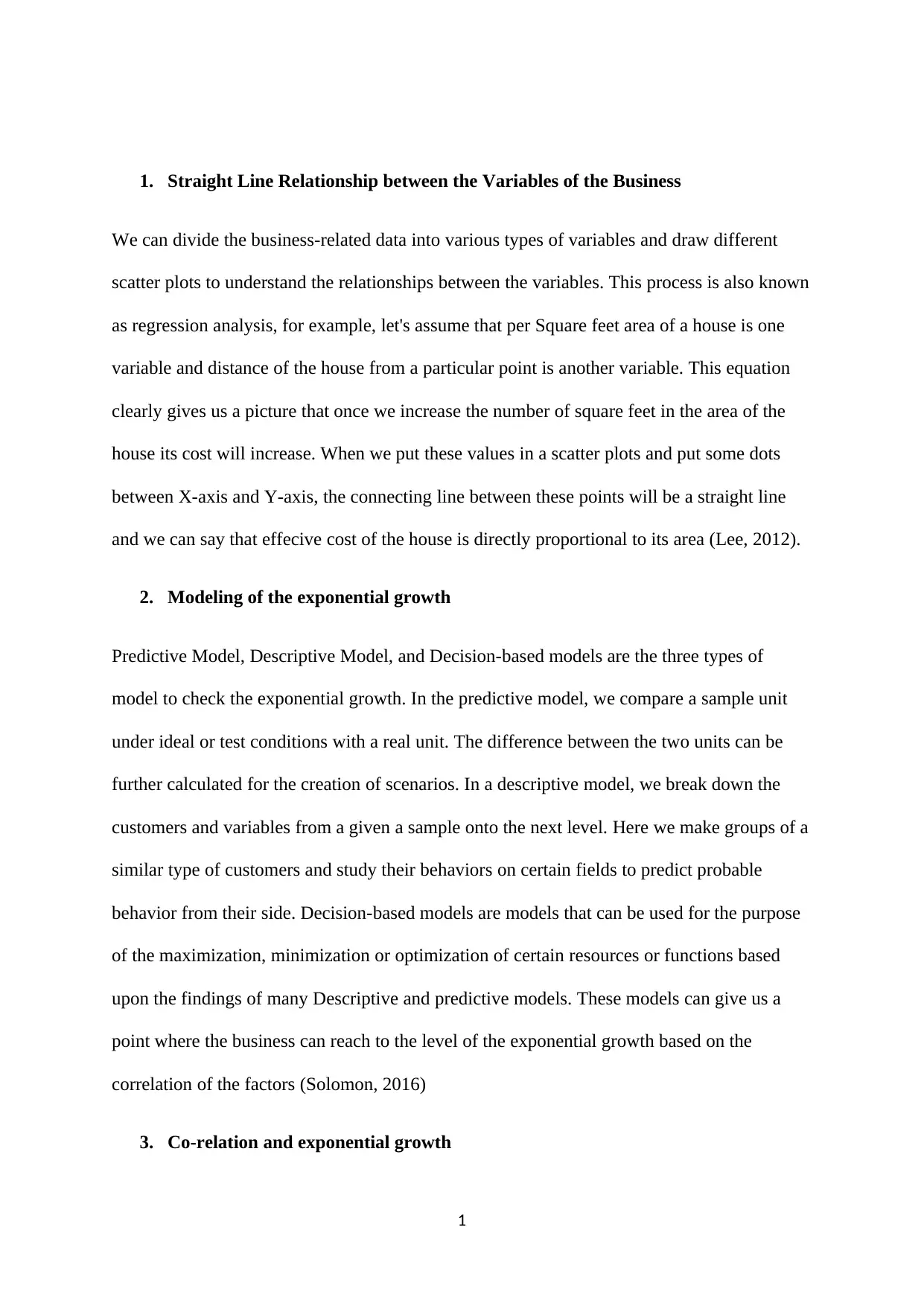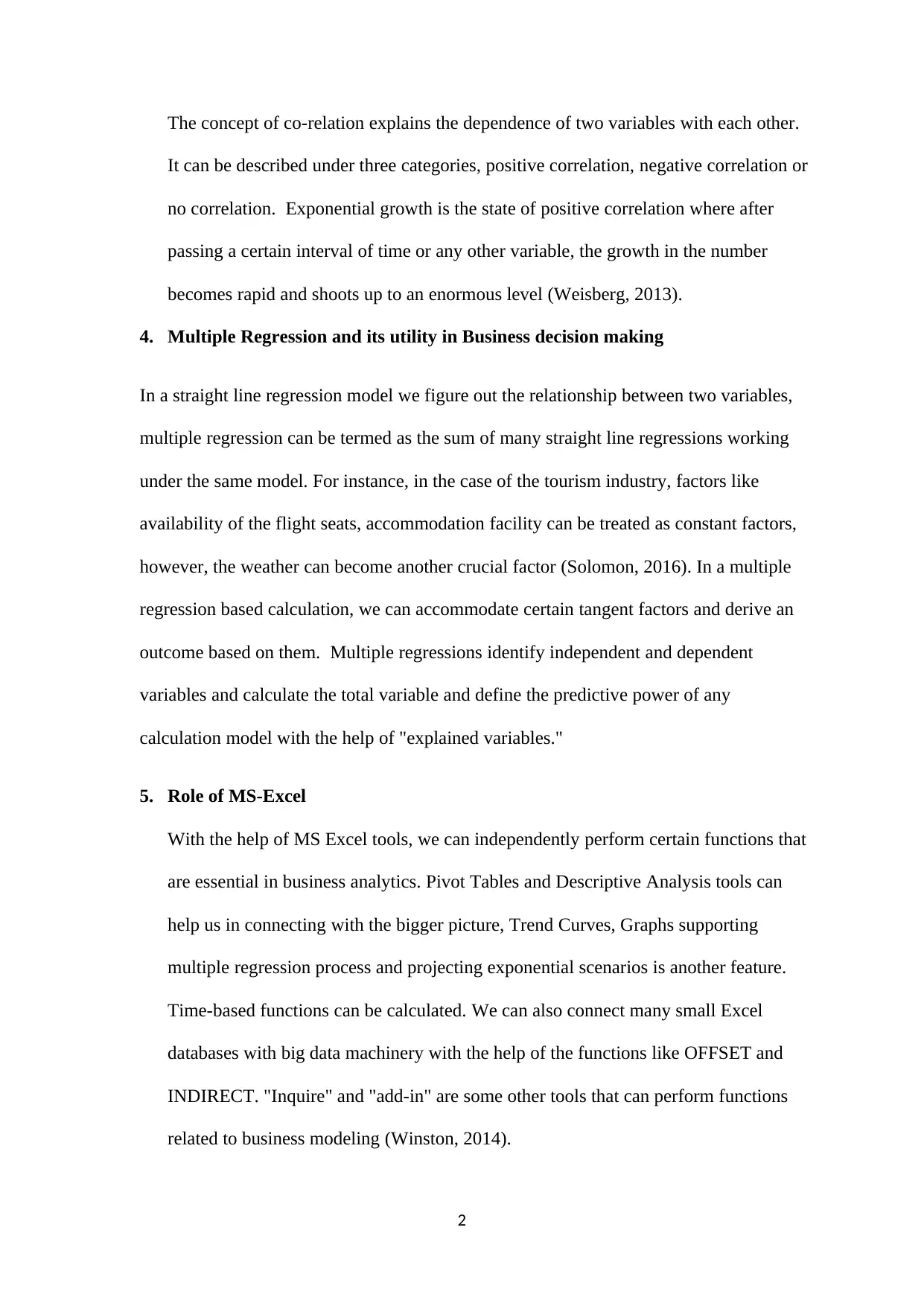Regression Analysis: Modeling Exponential Growth & Business Decisions
VerifiedAdded on 2023/04/24
|4
|744
|227
Report
AI Summary
This report delves into the application of regression analysis in business, focusing on understanding the relationships between variables and modeling exponential growth. It discusses the straight-line relationship between business variables and different types of models, including predictive, descriptive, and decision-based models, for assessing exponential growth. The concept of correlation and its role in exponential growth are explained, along with the utility of multiple regression in business decision-making, especially in accommodating tangent factors. Furthermore, the report highlights the role of MS Excel tools, such as Pivot Tables, Descriptive Analysis, Trend Curves, and time-based functions, in performing essential functions for business analytics and modeling, emphasizing their ability to connect small databases with big data machinery.
1 out of 4











![[object Object]](/_next/static/media/star-bottom.7253800d.svg)